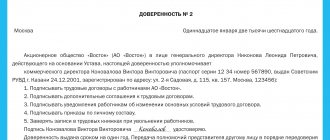Main categories of personnel
All employees can be divided into the following groups: employees and workers.
Employees include the following categories of employees: specialists, management and other employees who may be classified as employees. Personnel categories are distributed in accordance with the regulatory document (All-Russian Classifier of Occupations). This document contains two sections of lists: employee positions and worker professions. The first include employees who hold leadership positions at enterprises and in their structural divisions. This category of personnel may include directors, managers, managers and chief specialists.
Workers may include persons who perform primarily the functions of physical labor and are directly involved in the creation of material assets, maintaining equipment and production premises in working order. Employees are workers who carry out training and subsequent documentation, as well as business maintenance, accounting and control.
METHODS FOR CALCULATING THE NUMBER OF PRODUCTION PERSONNEL
Production personnel are workers directly involved in the process of creating material assets, as well as those engaged in repairs, moving goods, and providing services. Production personnel are divided into two categories:
- main (production of enterprise products);
- auxiliary (maintenance of the main production process).
Methods for calculating the number of workers depend on the standard or non-standard work they perform. The calculation of the number of workers is carried out by sections, workshops, and then for the enterprise as a whole. At the same time, the volume of work to be performed in standard hours is compared with the annual working time of one worker.
The following working time funds are distinguished:
- calendar (takes into account the total number of calendar days in a year);
- nominal (determines the number of possible working days in a year, equal to the calendar fund excluding non-working days);
- valid (different from nominal by the removal of unused time from it (vacation, illness, performance of government duties, etc.)).
To calculate the number of main workers, two complementary methods are used:
- according to labor intensity standards;
- according to equipment maintenance standards.
When calculating according to labor intensity standards, the number of main workers on the payroll ( Ksp ) is determined by dividing the labor intensity of the production volume in standardized hours by the actual working time of one worker:
Ksp = ΣNiti / Fd (i = 1, …, m), (1)
where Ni is the production program in physical terms;
ti is the planned labor intensity of a unit of production (work), taking into account the influence of organizational and technical measures implemented in the planned year;
Fd - actual time fund;
m is the number of products (works) performed by this group of workers.
It is necessary to distinguish between the payroll and attendance numbers of workers. The payroll, as a rule, is larger than the turnout, as it takes into account the additional number of workers to replace those on vacation, when performing government duties, etc.
The payroll number of the main workers of an enterprise is determined by dividing the labor intensity of gross output in standard hours by the actual working time of one worker; the number of workers present - divided by the nominal time fund.
When calculating the payroll, the payroll coefficient ( rsp ) is used, which is calculated as the ratio of the nominal time fund ( Fн ) to the actual time fund:
rsp = Fn / Fd. (2)
Using the payroll coefficient, you can derive the relationship between the payroll and attendance numbers of workers :
Ksp = Kav × rsp, (3)
where Kyav is the turnout number of workers;
KSP - payroll number of workers.
The number of main workers can also be determined by service standards and the number of units and machines, taking into account the shifts of their work. In this case, the turnout number is first determined, then the payroll (using the payroll coefficient).
The number of auxiliary workers is determined in two ways:
- according to service standards;
- according to the availability of jobs.
FOR YOUR INFORMATION
The service rate refers to the number of jobs or other units served by one worker. Calculation based on service standards is more accurate, but requires preliminary establishment of these standards.
To calculate the number of auxiliary workers by workplace, you need:
- make a list of jobs;
- determine the need for workers for each of them.
The enterprise's total need for workers is calculated by summing the number of main and auxiliary workers in all workshops and areas.
The number of engineering and technical workers (E&T), office workers and junior service personnel is established by drawing up the staffing table. The staffing table is drawn up in relation to the adopted production management scheme, the content and scope of work at each site. The number of many categories of engineers and employees, junior service personnel is determined by service standards, controllability standards, and by mathematical modeling.
By comparing the actual number of workers at the beginning of the planned period and the plan's demand at the end of the period, the additional personnel requirement ( Kdop ) is calculated. In this case, one should take into account the normal loss of workers (conscription into the army, transfer to another job, voluntary dismissal, retirement, etc.). The calculation formula looks like this:
Kdop = (Ksp – Kf) + Ksp × U / 100%, (4)
where Ksp is the number of workers on the payroll;
Kf - actual number of personnel at the beginning of the planning period;
Y is the planned percentage of staff attrition in the year.
Having determined the need for personnel, they draw up a plan to meet this need, that is, a balance of the workforce, a plan for training and advanced training.
EXAMPLE 1
Table 1 shows the calculation of the number of main production workers according to the labor intensity of manufacturing products.
| Table 1. Calculation of the number of main workers by labor intensity ( actual working hours - 1570 hours) | ||||||
| Product | Labor intensity of the annual production program, thousand standard hours | Units | Turners | Grinders | Locksmiths | Workers of other specialties |
| Product A | 148 | % | 29,30 | 19,54 | 9,77 | 41,39 |
| thousand hours | 43,4 | 28,9 | 14,5 | 61,3 | ||
| Product B | 95 | % | 25,00 | 35,00 | 5,00 | 35,00 |
| thousand hours | 23,8 | 33,3 | 4,8 | 33,3 | ||
| Product B | 48,5 | % | 40,00 | 22,00 | 11,00 | 27,00 |
| thousand hours | 19,4 | 10,7 | 5,3 | 13,1 | ||
| Total | 291,5 | thousand hours | 86,5 | 72,8 | 24,5 | 107,6 |
| List number of workers | 55 | 46 | 16 | 69 | ||
| Expected number of workers at the beginning of the planning period | 51 | 48 | 13 | 56 | ||
| Surplus of workers (–)/shortage of workers (+) | 4 | –2 | 3 | 13 | ||
Four categories of workers are involved in the production of goods (A, B and C) : turners, grinders, mechanics, and workers of other specialties.
For each product, it is known what percentage of time workers of each category spend on its production. Accordingly, it is possible to calculate how long turners, grinders, mechanics and other workers must work in order to complete the annual production program.
For example, the total labor intensity of the annual program for the production of product A is 148 thousand standard hours. Of the total number of standard hours, 29.3% is accounted for by the work of turners (148 thousand hours × 29.3% = 43.4 thousand hours); 19.54% - work of grinders (148 thousand hours × 19.54% = 28.9 thousand hours); 9.77% - work of mechanics (148 thousand hours × 9.77% = 14.5 thousand hours); 41.39% - labor costs of workers in various specialties (148 thousand hours × 41.39% = 61.3 thousand hours).
We carry out similar calculations for all products and find that workers need to work 291.5 hours , including:
- turners - 86.5 thousand hours;
- grinders - 72.8 thousand hours;
- mechanics - 24.5 thousand hours;
- workers of other specialties - 107.6 thousand hours.
The actual time fund of one worker is 1570 hours . Based on this, the payroll number of workers will be :
- turners - 55 people. (85.6 thousand hours / 1570 hours);
- grinders - 46 people. (72.8 thousand hours / 1570 hours);
- mechanics - 16 people. (24.5 thousand hours / 1570 hours);
- workers of various specialties - 69 people. (107.5 thousand hours / 1570 hours).
Comparing the payroll number of workers with the expected number at the beginning of the planning period, we come to the conclusion that we have an excess of grinders (2 people) and a shortage of other workers: 4 turners, 3 mechanics and 13 workers of various specialties.
EXAMPLE 2
Table 2 shows the calculation of the number of auxiliary workers according to service standards.
| Table 2. Calculation of the number of auxiliary workers according to service standards, people. | |||||||||
| Profession | Workplace/serviced unit | Number of workstations/units | Standard of service | Number of shifts | Turnout number of workers | Payroll ratio | Scheduled number of workers according to plan | Expected number of workers at the beginning of the planning period | Surplus of workers (–)/shortage of workers (+) |
| Duty mechanic | Machine tools | 150 | 2 | 12 | 1,25 | 15 | 14 | 1 | |
| Crane operator | Overhead electric cranes | 2 | 1 | 2 | 4 | 1,21 | 5 | 3 | 2 |
The calculation was carried out for two professions: duty mechanic and crane operator. The mechanics on duty service the machines (150 pcs.). The service norm per mechanic is 25 machines. The company operates in two shifts. Based on these data, we calculate the turnout number of workers :
150 pcs. / 25 pcs. × 2 shifts = 12 people.
Payroll ratio - 1,25.
We use formula (3) and determine the payroll number of workers :
12 people × 1.25 = 15 people
The expected number of mechanics on duty at the beginning of the planned period is 14 people. Hence the need for on-duty mechanics - 1 person.
We will carry out similar calculations for crane operators. The need for crane operators is 2 people.
Factors influencing personnel classification
People are the most important element of the productive forces and the main source of development of the entire economy. Their education, skill, training and motivation are the main tools of any production. Experts have proven that there is a certain dependence between the well-being of people and the competitiveness of the economy on the quality of the category of personnel of an enterprise and organization.
The formation of an enterprise's personnel is influenced by both internal (products, technology and production organization) and external (demographic process, moral and legal norms of society, as well as the nature of the labor market) factors. At the same time, the latter must specify the categories of personnel in terms of macroeconomic parameters: the number of working-age (active) population, its general educational level, employment level and potential labor reserve. These characteristics also determine the qualitative and quantitative parameters of labor resources.
Who is the administrative and technical staff?
Administrative and technical personnel are employees with engineering specialties.
Their duties include responsibility for organizing and implementing activities in equipment operating on electricity. For the convenience of monitoring an enterprise in the field of electrical safety and organizing appropriate training, a specialized commission is usually created. All its participants are administrative and technical personnel. The chief engineer or chief power engineer may be appointed as the chairman. Members of the commission can be a labor protection engineer and heads of structural units. The full commission is authorized to conduct an inspection of a business entity to identify violations of compliance with legislative electrical safety requirements.
It is also responsible for organizing training and testing knowledge with the assignment of appropriate qualifications to electrical workers.
Responsibilities of administrative and technical workers
Main and support staff
Many business entities, in addition to their main activities, also perform functions that do not correspond to their main purpose. Therefore, there are such categories of production personnel: main and non-core activities. For example, the first group in industry includes workers of all types of production (main, service and auxiliary), as well as employees of research departments, plant management, security, and warehouses. In other words, all those who are engaged in any way in production or its direct service. The second group includes personnel registered in structures that are on the balance sheet of a business entity, but are not directly related to production. For example, kindergartens, nurseries, housing and communal services, clinics and departmental educational institutions.
The specified classification of personnel at an enterprise is needed for calculating wages and coordinating certain labor criteria with performance indicators. At the same time, the interaction of enterprises with other commercial entities and banking institutions allows us to make this grouping conditional.
Which production personnel are considered auxiliary?
Production personnel includes workers and specialists, through whose actual activities the organization’s income is generated or its main functions are performed. Support staff may also be of the production type.
Manufacturing support personnel are employees who are not involved in production or providing the vital needs of the organization. But they affect the company's activities. These workers include cleaners, cooks in departmental canteens, cleaning services and others.
Grouping of personnel depending on the functions performed
Depending on the nature of the functions performed, there is a broader classification of personnel at the enterprise than indicated above: management, specialists, workers and employees.
Managers include employees who head not only enterprises, but also their structural divisions. These include directors, chiefs, managers, managers, foremen, as well as their deputies.
The “specialists” category of personnel includes workers who perform special economic and engineering work. This includes engineers, economists, accountants, standard setters, administrators, legal advisers and sociologists.
Employees are workers who prepare documentation, record keeping, control and business maintenance of business activities. These include accountants, clerks, agents, draftsmen, secretaries and stenographers.
The category of personnel “workers” implies the presence of employees who are directly involved in the creation of various material assets, repair or movement of goods, transportation of passengers, and the provision of material services. In addition to the above, this category includes janitors, cleaners, security guards, couriers and cloakroom attendants.
How to calculate the optimal ratio of managers and performers in a company
The commercial director wrote a memo in which he asked to add the position of his deputy to the staff instead of the existing position of head of the sales department.
When the HR director agreed on this with the general director, he began to think: does it really matter whether he is the head of a department or the deputy director?
The general director, looking at the staffing table, noticed that the heads of some departments had two or three employees subordinate to them, while others had 15.
“Are there not many managers and how many should there be?” asked the general director of HR. Of course, the HR director could not immediately answer this question. To do this, you need to analyze the organizational structure of the company and make calculations. It is impossible to judge different departments in the same way: the ratio of managers and performers, which is optimal for production, is completely inapplicable for other departments - for example, designers or marketing.
The CEO agreed
Question: In the regulations on remuneration of the MKU, the ratio of the payroll of the main and auxiliary personnel is defined as 60 to 40.
The approved staffing table is drawn up in such a way that this ratio is maintained. But in the actual payment of wages, due to the presence of vacancies in the specialty of the main personnel, this ratio is not maintained.
In addition, the situation of reducing incentive payments to a specialist of the main personnel based on work results also leads to a violation of the payroll ratio of 60 to 40 in such a month, provided that incentive payments to the support staff are maintained. Is this situation a violation of the provisions defining the payroll?
(Rostrud information portal “Onlineinspection.RF”, September 2015)
The regulations on remuneration of the MKU define the payroll ratio of the main and auxiliary personnel as 60 to 40. The approved one is drawn up in such a way that this ratio is maintained.
But in the actual payment of wages, due to the presence of vacancies in the specialty of the main personnel, this ratio is not maintained. In addition, the situation of reducing incentive payments to a specialist of the main personnel based on work results also leads to a violation of the payroll ratio of 60 to 40 in such a month, provided that incentive payments to the support staff are maintained. Is this situation a violation of the provisions defining the payroll?
Due to the fact that according to the development by government bodies of the constituent entities of the Russian Federation and local government bodies of performance indicators of subordinate state (municipal) institutions of social services for the population, their managers and employees by types of institutions and main categories of workers, approved by the Ministry of Labor of Russia on July 1, 2013 N 287, it is established that it is necessary to comply with the ratio of the average wages of the main and auxiliary personnel of the institution, and not the wage fund, in this case there are no violations.
Professions and specialties
This classification of personnel is especially interesting. A profession is represented by a type of work activity, the implementation of which may require special knowledge and skills.
A specialty is a fairly narrow subtype of work activity within a profession. Thus, the profession of a turner itself can cover such specialties as a rotary turner, a boring turner, etc.
The professionalism of the personnel always depends both on the specifics of the activity, products and services, and on the level of technical condition. Each industry is characterized by the presence of specialties. At the same time, there are common professions of employees and workers. An example is the food industry, which has about 850 specialties and professions. However, only a few of them are specific to this industry.
How long does the whole procedure take?
Drawing up an employment contract takes no more than 3 days from the date the employer receives all the necessary documents from the future employee. After signing the contract, you can begin to fulfill your duties at the enterprise.
The registration of the enrollment order takes another 3 days, but from the moment the employment relationship actually begins.
Entry into the work book and creation of a personal card are made upon approval of the enrollment order.
Now you know the procedure for employing citizens in a workplace. Please share this article on social media. networks if the information was useful to you.
Grouping employees by qualification
This classification is based on the ability to perform work of a certain complexity. In this case, we can talk about qualifications, represented by a set of special knowledge and practical skills that determine the level of preparedness of employees to perform certain professional duties.
The qualifications of management personnel are characterized by their level of education and experience in a specific position. In this case, it is customary to distinguish the following levels of specialists: the highest qualifications (employees with academic degrees and titles); higher qualifications (employees have higher education and practical experience); average qualifications (workers who have specialized secondary education and relevant experience); practitioners (availability of engineering and economic positions among workers).
Laws governing employment
The registration scheme for a new employee is regulated by the Labor Code of the Russian Federation. The procedure must be carried out in strict accordance with the articles. Otherwise, the employee has the right to complain about the employer to the Labor Inspectorate. This is fraught with administrative and even criminal liability for unscrupulous management.
Registration for work
Employment regulations:
- Labor Code. Article 65 provides a list of documents required for hiring a new employee. Article 66 outlines the rules for filling out an employee’s work book. Chapters 10 and 11 go into detail about how to write an enrollment order that meets all standards.
- Government Decree No. 225 and Ministry of Labor Decree No. 69 describe the standards for maintaining and storing employee work books.
- Resolution No. 1 of the Statistics Committee regulates the procedure for drawing up an employment contract and the personal file of a hired employee.
Skill level
According to the level of qualification, employees are divided into highly qualified, qualified, semi-skilled and unskilled. They can perform work of varying complexity, and they tend to have unequal professional training.
The specified qualification characteristics of employees, along with such as age, gender, length of service and degree of labor mechanization, will serve as the basis for calculations of various types of structures. To increase the efficiency of an enterprise, it is important not only to ascertain the number of employees, but also to study a certain relationship between them.
This approach will allow not only to identify factors and their influence on the results of the enterprise’s activities, but also to calculate the corresponding structural changes with their driving forces and trends. On this basis, a real strategy for the development of labor resources is formed.
The specifics of human resources are as follows:
- People are endowed with intelligence, their reaction to management is emotional, which means the process of interaction between the organization and the employee is two-way.
- People are capable of constant improvement and development. This is one of the important and long-term sources of increasing the efficiency of any organization.
- A person’s working life lasts in modern society for 30-50 years; accordingly, the relationship between a person and an organization can be long-term.
- People, unlike material and natural resources, come to the organization consciously with certain goals and expect help from the organization in realizing these goals.
- The uniqueness of each individual person. No two people are the same, and accordingly their reactions to management methods are different.
Number of impressions: 48622
Administrative and economic personnel - what is it?
When considering the question of what constitutes administrative and economic personnel, it is necessary to understand that the direct legislative regulation of this issue in the Russian Federation is provided rather poorly. Most of the actions to determine the organization’s personnel structure rest with the employer himself, which means that it is he who decides how to divide personnel into various categories. At the same time, there are two radically different approaches to defining the concept of administrative and economic personnel, which are revealed as follows:
- In a broad sense, administrative and economic personnel is one of the highest categories of the personnel structure, including both administrative and managerial and service personnel associated with the conduct of internal business activities. Moreover, in many ways this concept often turns out to be identical to administrative personnel as a whole.
- In a narrow sense, administrative and economic personnel include employees who do not belong to the administrative and managerial personnel, but participate primarily in the internal economic activities of the enterprise. It is from this point of view that this concept will be considered further.
In some situations, issues of classifying employees into the personnel category under consideration may be regulated by separate regulations. Mostly these requirements apply to individual budgetary institutions and can be established not only by departmental documents of federal significance, but also regulated at the municipal or regional level. In particular, a separate definition of administrative and economic personnel is present in educational institutions in Moscow, as well as in the regulations regulating the activities of leper colonies.
The employer, in turn, has the right to independently form a personnel structure and distribute employees among different personnel groups. This approach can be justified for the most efficient organization of work and the use of convenient tools for monitoring and motivating employees. In addition, the distribution of employees into different types of personnel can also help in creating a system of subordination in the enterprise. He can use local regulations and other internal documentation to resolve these issues.









